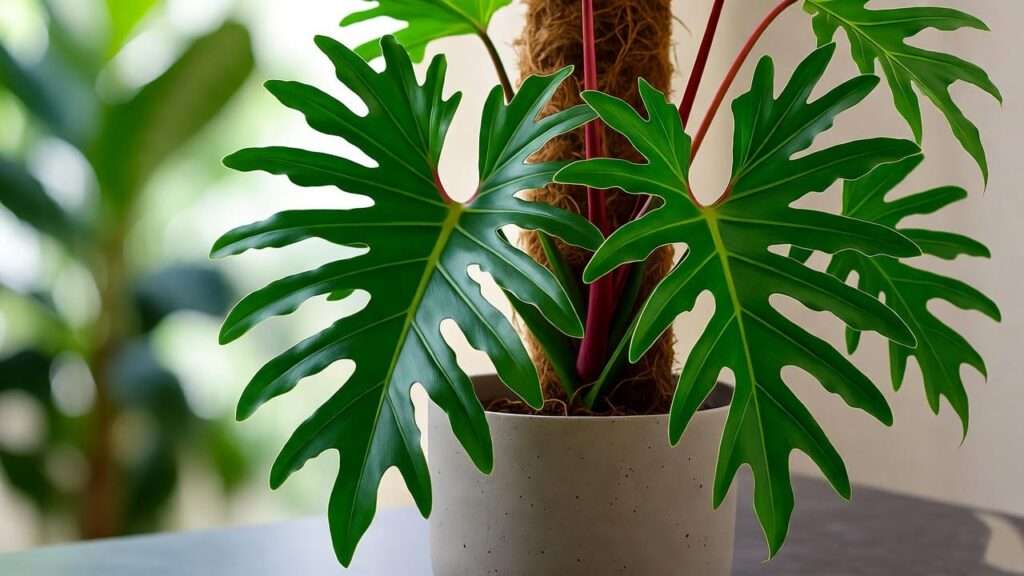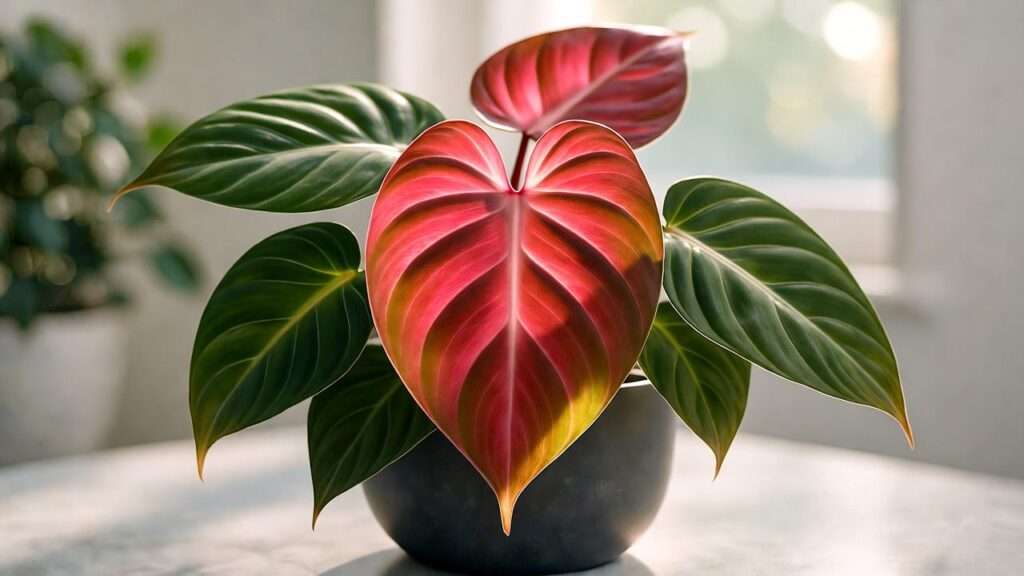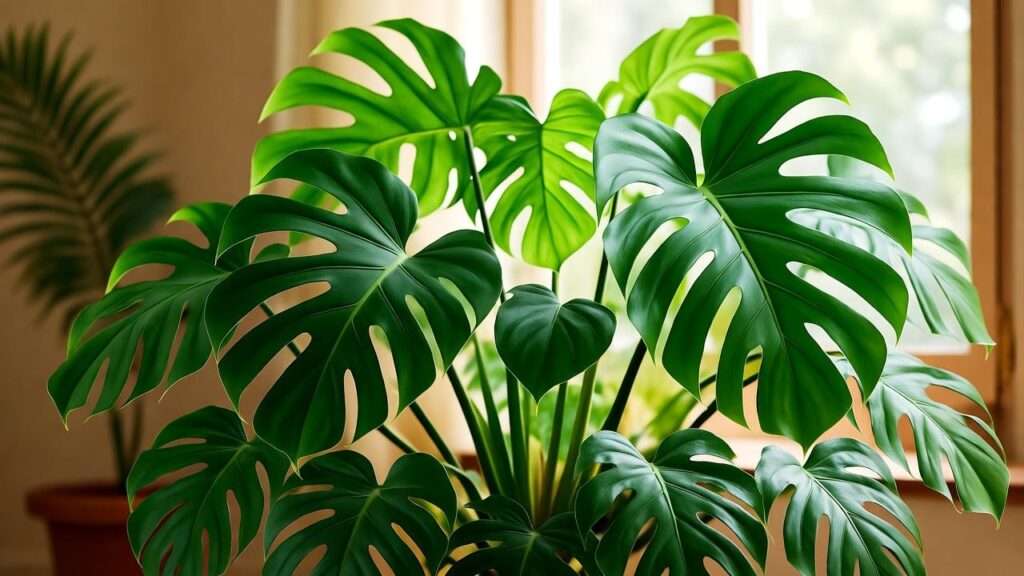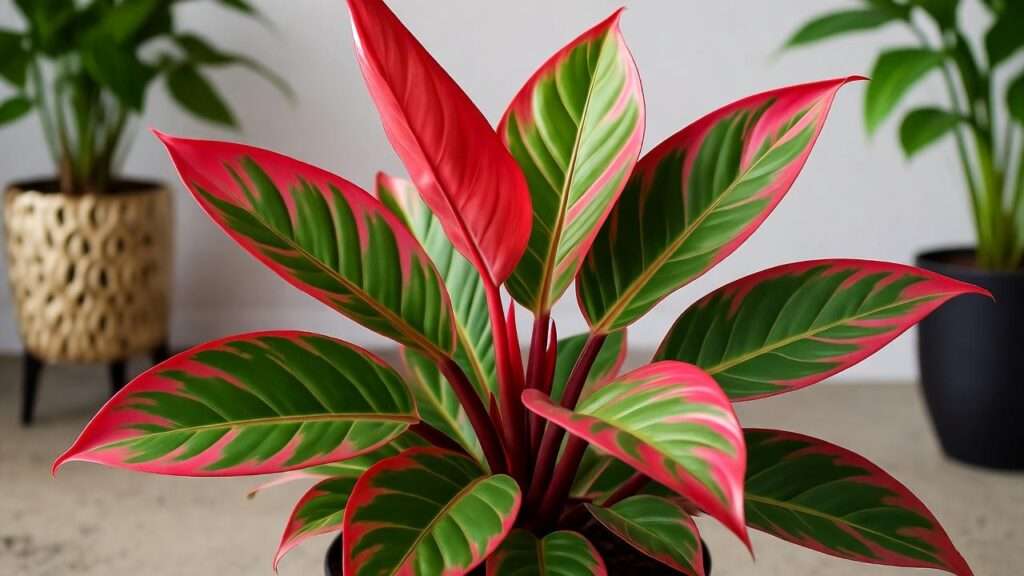Imagine transforming your home into a lush, tropical oasis with a single plant that’s as vibrant as it is low-maintenance. The Philodendron Florida Green, a stunning hybrid of Philodendron squamiferum and Philodendron pedatum, is the perfect choice for plant enthusiasts craving bold, glossy foliage. Its deeply lobed leaves and climbing growth make it a showstopper, but keeping it thriving can feel daunting without the right guidance. Whether you’re a seasoned plant parent or a beginner, this ultimate care guide will equip you with expert tips to ensure your Philodendron Florida Green flourishes. From lighting to propagation, we’ve got you covered with practical, science-backed advice to solve common challenges and elevate your indoor jungle.
As a horticulturist with over a decade of experience cultivating tropical plants, I’ve nurtured countless Philodendrons, including this unique hybrid. This guide draws on that expertise, blending hands-on insights with research from botanical sources to deliver a comprehensive resource. Let’s dive into how you can grow a thriving Philodendron Florida Green and make it the centerpiece of your home.
What Is the Philodendron Florida Green?
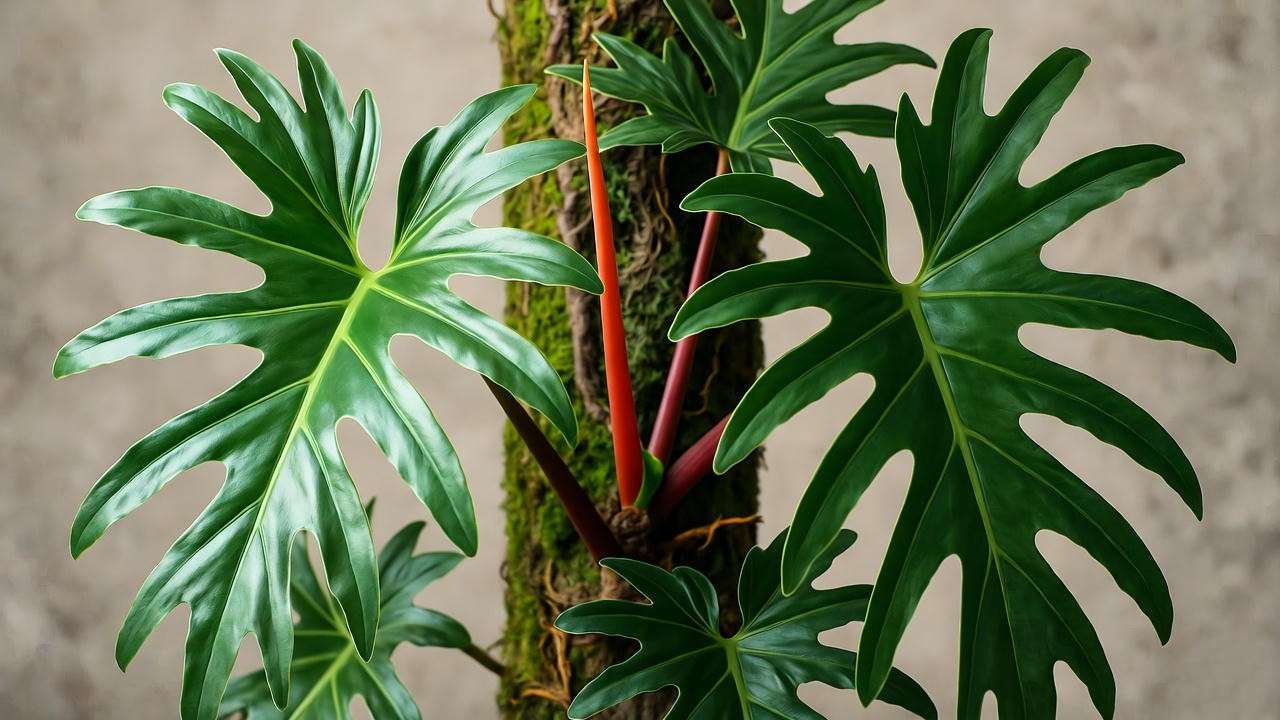
Origins and Characteristics
The Philodendron Florida Green is a hybrid born from the crossbreeding of Philodendron squamiferum and Philodendron pedatum, two species native to South American rainforests. This cultivar boasts deeply lobed, heart-shaped leaves with a glossy, emerald-green finish, giving it a distinctive, almost sculptural appearance. Its climbing or vining growth habit allows it to cascade elegantly or climb a support, making it versatile for various indoor setups. The plant’s stems, often tinged with red when young, add an extra layer of visual intrigue.
Unlike some finicky houseplants, the Philodendron Florida Green is relatively forgiving, making it ideal for both novice and experienced growers. Its moderate growth rate—typically 6-12 inches per year under optimal conditions—means you’ll see steady progress without overwhelming maintenance.
Why Choose a Philodendron Florida Green?
This plant isn’t just a pretty face; it’s a practical addition to any indoor space. The Philodendron Florida Green is an excellent air purifier, removing toxins like formaldehyde from the air, according to NASA’s Clean Air Study. Its adaptability to a range of indoor conditions, from moderate to bright light, makes it a standout compared to fussier tropicals like Calatheas. Plus, its lush foliage adds a touch of biophilic design, enhancing your space’s aesthetic and promoting mental well-being.
Compared to other philodendrons, such as the heartleaf (Philodendron hederaceum) or the split-leaf (Monstera deliciosa), the Florida Green strikes a balance between bold aesthetics and manageable care. Its unique leaf shape sets it apart, offering a tropical vibe without the high-maintenance demands of some exotics.
Essential Care Requirements for Philodendron Florida Green
Light Needs
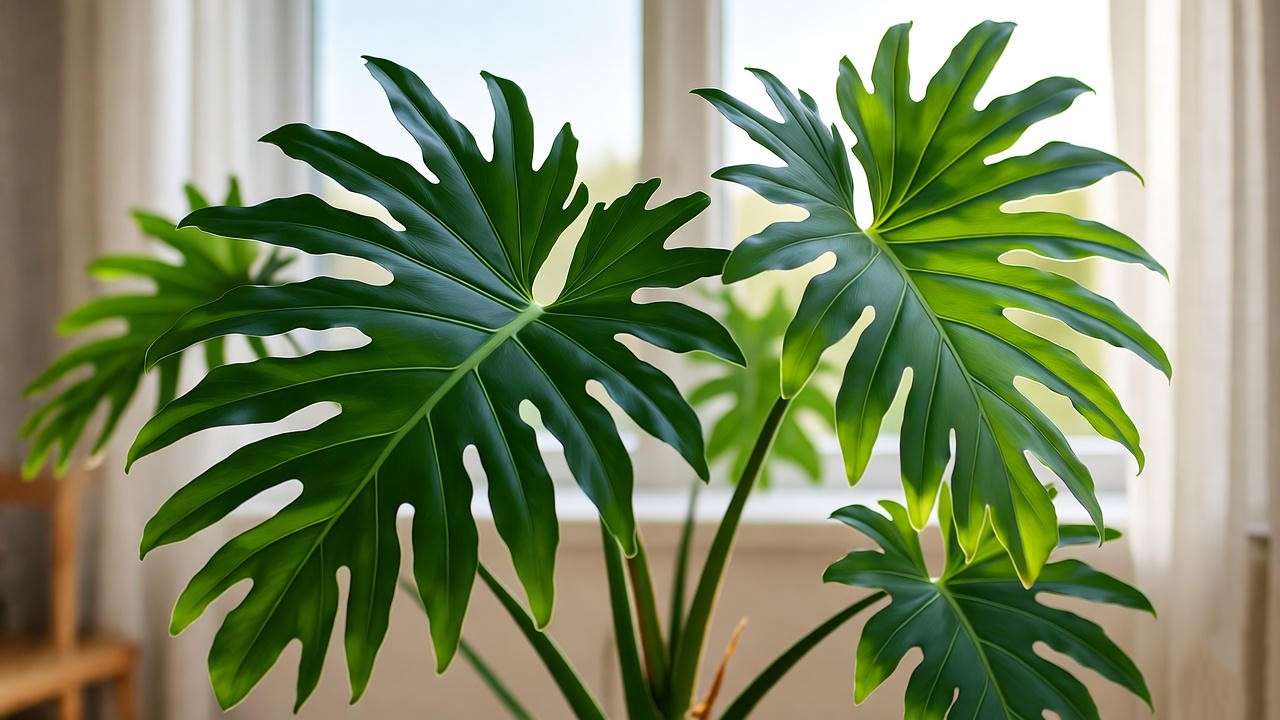
Light is the cornerstone of a thriving Philodendron Florida Green. This plant craves bright, indirect light to maintain its vibrant foliage and steady growth. Place it near an east-facing window for gentle morning sun or a few feet from a south- or west-facing window with a sheer curtain to diffuse direct rays. Too little light leads to leggy, sparse growth, while direct sunlight can scorch its leaves, causing unsightly brown spots.
Tip: If you’re unsure about your light conditions, use a light meter app (like Lux Light Meter) to measure foot-candles; aim for 1000-2000 FC for optimal growth. Alternatively, observe your plant: if leaves are small and spaced far apart, it needs more light.
Watering Guidelines
Watering is where many plant parents stumble, but the Philodendron Florida Green is forgiving if you follow a simple rule: water when the top 1-2 inches of soil feel dry. Depending on your home’s conditions, this typically means watering every 7-10 days in spring and summer, less frequently in fall and winter. Use a pot with drainage holes to prevent water from pooling, which can lead to root rot.
Signs of overwatering include yellowing leaves or a soggy soil surface, while underwatering causes drooping or curling leaves. Always check the soil before watering to avoid guesswork.
Example: For beginners, try this weekly checklist:
- Monday: Check soil moisture with your finger or a moisture meter.
- Wednesday: If dry, water thoroughly until it drains from the bottom.
- Friday: Inspect leaves for signs of stress and adjust care as needed.
Soil and Potting Mix
A well-draining, nutrient-rich potting mix is essential for the Philodendron Florida Green. Combine 50% peat moss or coco coir, 25% perlite, and 25% orchid bark for an airy, moisture-retentive blend that mimics its rainforest origins. Avoid heavy, compacted soils that retain too much water, as they increase the risk of root rot.
When repotting (every 1-2 years or when roots outgrow the pot), choose a container 1-2 inches larger in diameter with ample drainage holes. Ensure the potting mix is fresh to provide nutrients and prevent pest buildup.
Humidity and Temperature
Hailing from humid rainforests, the Philodendron Florida Green thrives in 50-70% humidity. Most homes average 30-50% humidity, so you may need to boost levels with a humidifier, pebble tray, or by grouping plants together to create a microclimate. Misting can help but is less effective long-term. If leaves develop crispy edges, it’s a sign humidity is too low.
Maintain temperatures between 65-85°F (18-29°C), avoiding cold drafts from windows or air conditioners. This plant is sensitive to temperatures below 55°F, which can stunt growth or cause leaf drop.
Tip: In dry climates, place a small humidifier (like the Levoit Classic 100) near your plant, set to maintain 60% humidity, for consistent results.
Fertilizing for Optimal Growth
Feed your Philodendron Florida Green with a balanced, water-soluble fertilizer (e.g., 20-20-20) diluted to half-strength every 4-6 weeks during the growing season (spring and summer). Pause fertilizing in fall and winter when growth slows. Over-fertilizing can cause leaf tip burn or salt buildup in the soil, so always flush the pot with water every few months to clear excess salts.
Example: Follow this fertilizing schedule:
- Spring/Summer: Apply fertilizer every 4 weeks after watering.
- Fall/Winter: Skip fertilizing unless the plant is actively growing under grow lights.
Tip: Organic options like fish emulsion can work well but use sparingly to avoid odor.
Pruning and Maintenance
Regular pruning keeps your Philodendron Florida Green bushy and healthy. Use clean, sharp shears to trim leggy stems or remove yellowed leaves, cutting just above a leaf node to encourage new growth. Pruning in spring promotes fuller foliage during the growing season. Wipe leaves with a damp cloth monthly to remove dust and enhance photosynthesis.
Tip: Apply neem oil (diluted per package instructions) every 6-8 weeks to prevent pests like spider mites, which are attracted to dusty leaves.
Propagation Techniques for Philodendron Florida Green
Stem Cutting Method
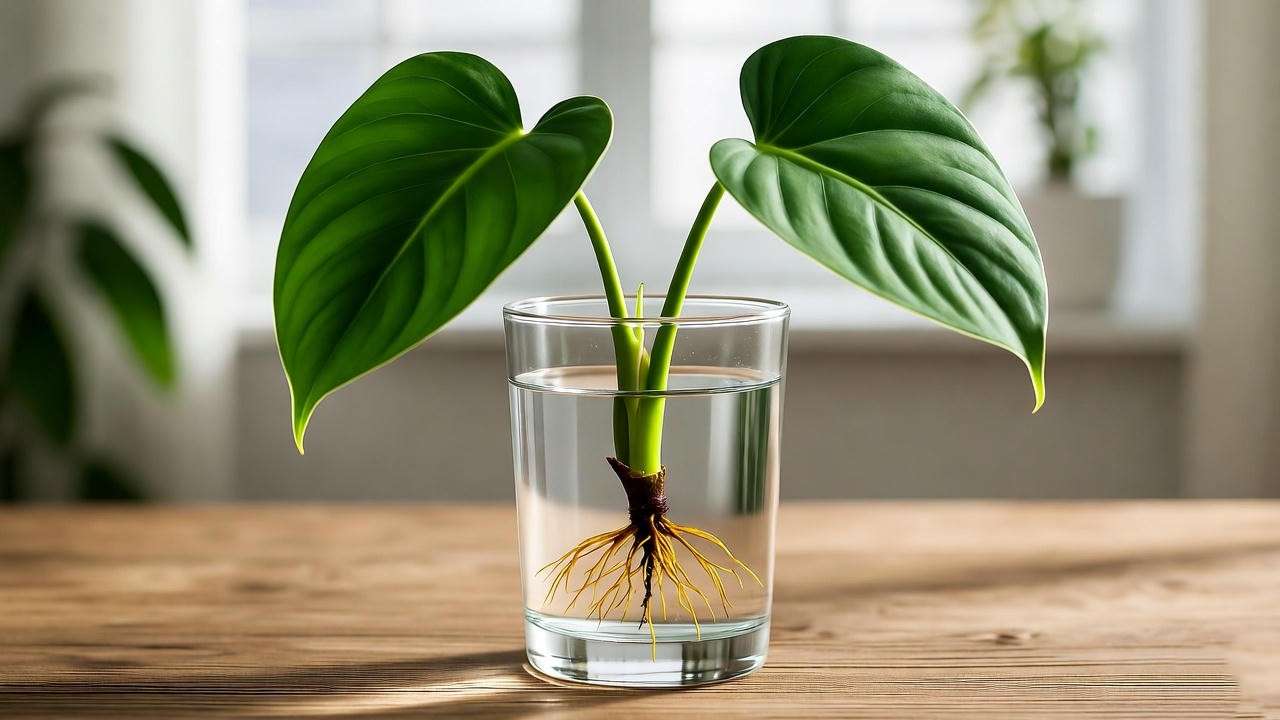
Propagating your Philodendron Florida Green is a rewarding way to expand your collection or share with friends. The stem cutting method is simple and effective:
- Select a healthy stem with at least one node (the bump where leaves attach) and 1-2 leaves.
- Cut below the node with sterilized shears.
- Place the cutting in water (covering the node) or moist potting mix.
- Keep in bright, indirect light and change water weekly (if using water).
- Roots should form in 2-4 weeks; transplant to soil once roots are 1-2 inches long.
Example: A healthy cutting might have one large, glossy leaf and a visible node, ensuring a higher success rate.
Air Layering (Advanced Technique)
For larger or more established plants, air layering is a reliable propagation method:
- Identify a healthy stem with a node.
- Make a small upward cut (1/3 through the stem) below the node.
- Wrap the cut area with damp sphagnum moss and cover with plastic wrap to retain moisture.
- Check weekly; roots should form in 4-6 weeks.
- Once roots are robust, cut below the rooted section and pot in soil.
Tip: Use a sharp, sterilized knife for clean cuts to minimize plant stress.
Common Problems and Solutions
Pests and Diseases
Like many indoor plants, the Philodendron Florida Green can occasionally attract pests such as spider mites, mealybugs, and aphids. Spider mites, tiny web-spinning pests, thrive in dry conditions and cause stippling or yellowing on leaves. Mealybugs appear as white, cottony masses in leaf axils, while aphids cluster on new growth, sucking sap and stunting development.
To combat pests:
- Organic Solution: Spray affected areas with a mixture of water and neem oil (1 tsp per 32 oz water) or insecticidal soap, ensuring thorough coverage of leaf undersides.
- Chemical Solution: For severe infestations, use a systemic insecticide labeled for houseplants, following package instructions carefully.
- Prevention: Maintain high humidity and clean leaves regularly to deter pests.
Root rot, caused by overwatering or poor drainage, is another common issue. Symptoms include mushy, black roots and a foul odor from the soil. To treat, remove the plant from its pot, trim affected roots, and repot in fresh, well-draining soil. Adjust watering habits to prevent recurrence.
Example: A client once noticed wilting despite regular watering. After inspecting the roots, we found root rot due to a pot without drainage holes. Switching to a terracotta pot with proper drainage resolved the issue within weeks.
leafy Issues
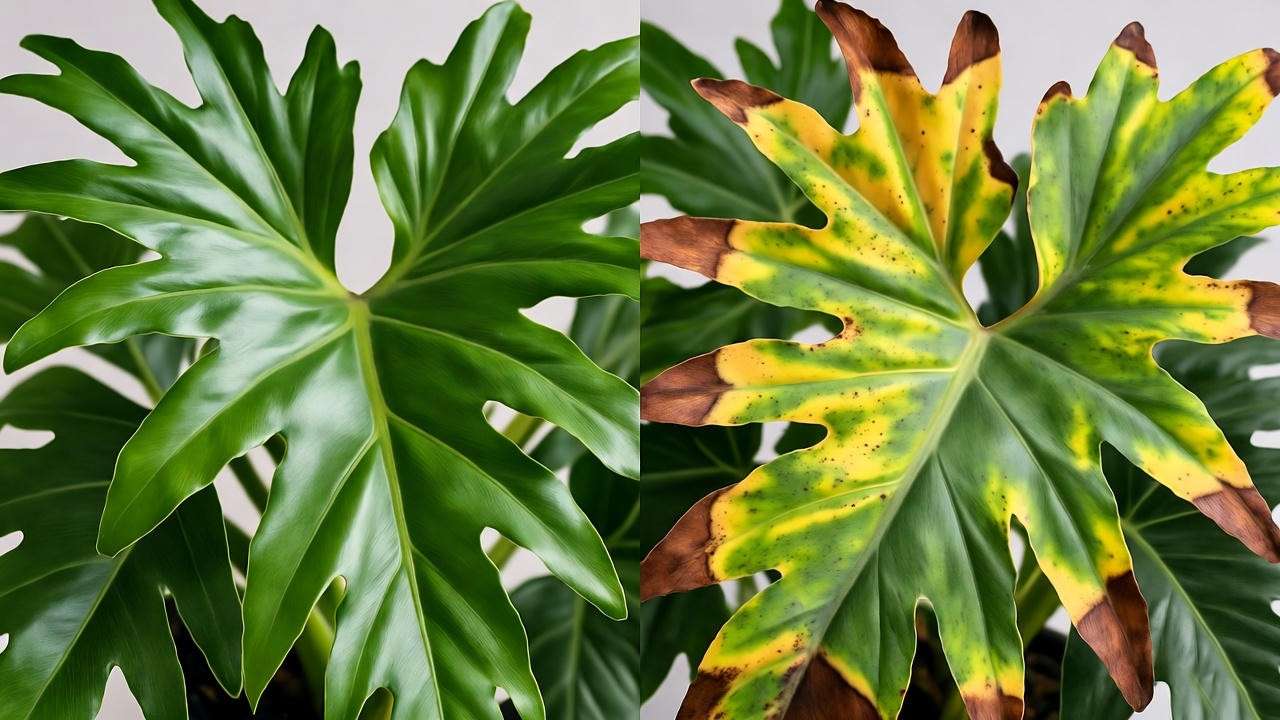
Leaf problems are often a cry for help from your Philodendron Florida Green. Here’s how to diagnose and fix common issues:
- Yellowing Leaves: Often a sign of overwatering or poor drainage. Check soil moisture and ensure the pot has drainage holes. Reduce watering frequency if needed.
- Browning Leaf Tips: Indicates low humidity or over-fertilizing. Increase humidity with a pebble tray or humidifier and flush the soil to remove excess fertilizer salts.
- Drooping Leaves: Suggests underwatering or temperature stress. Water thoroughly if soil is dry, and ensure the plant is kept away from cold drafts or heat vents.
Tip: Use a troubleshooting checklist to pinpoint issues quickly:
- Check soil moisture (dry or soggy?).
- Assess light exposure (too dim or too bright?).
- Monitor humidity and temperature (within 50-70% and 65-85°F?).
Slow Growth or Leggy Appearance
If your Philodendron Florida Green grows slowly or develops long, sparse stems, it’s likely not getting enough light or nutrients. Low light causes “leggy” growth as the plant stretches toward a light source, while nutrient deficiencies can stunt overall development.
Solutions include:
- Repositioning: Move the plant closer to a bright, indirect light source, such as an east-facing window.
- Supplemental Lighting: Use a full-spectrum grow light (e.g., Sansi 36W LED) for 10-12 hours daily if natural light is insufficient.
- Fertilizing: Ensure regular feeding during the growing season to provide essential nutrients.
Styling and Displaying Your Philodendron Florida Green
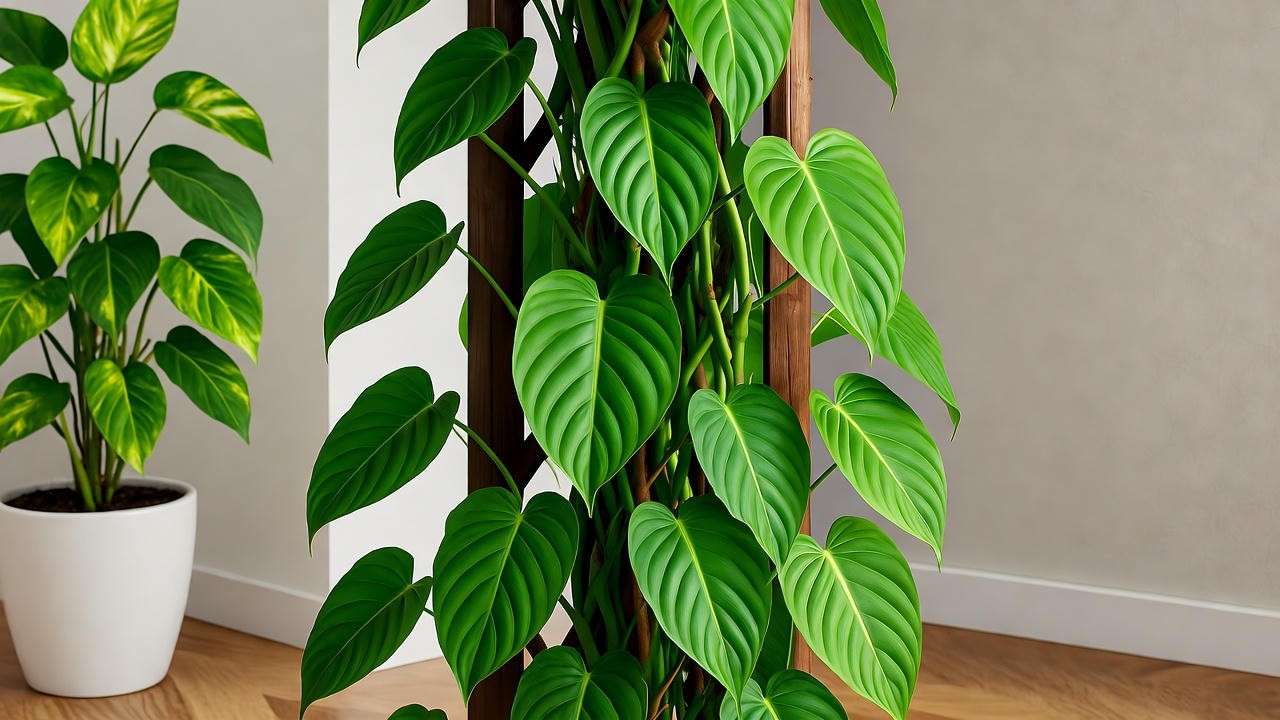
The Philodendron Florida Green’s climbing or trailing habit makes it a versatile addition to any home. Here are creative ways to showcase its beauty:
- Moss Pole or Trellis: Encourage upward growth by providing a moss pole or wooden trellis, creating a stunning vertical display.
- Hanging Basket: Let its vines cascade from a hanging planter for a lush, cascading effect, ideal for high shelves or corners.
- Tabletop Centerpiece: Place in a decorative ceramic pot on a coffee table or bookshelf for a bold focal point.
Choose pots that complement your decor—terracotta for a rustic look or glazed ceramic for modern elegance. Ensure the pot has drainage holes to prevent water buildup.
Example: In my home, I styled a Philodendron Florida Green on a moss pole in a bright living room corner, paired with a Monstera for a tropical vignette. Guests always comment on the vibrant, jungle-like atmosphere it creates.
Tip: Pair with complementary plants like pothos or peace lilies to create a cohesive indoor jungle, enhancing both aesthetics and humidity.
Fun Facts and Unique Traits
The Philodendron Florida Green is more than just a pretty plant. Here are some fascinating facts:
- Hybrid History: Developed by crossing two South American species, this plant combines the best traits of its parents—bold leaves from squamiferum and vigorous growth from pedatum.
- Air-Purifying Power: It’s among the top plants for improving indoor air quality, as noted in NASA’s 1989 Clean Air Study.
- Biophilic Benefits: Studies, like one from the Journal of Environmental Psychology (2020), show that caring for plants like the Philodendron Florida Green can reduce stress and boost mood.
FAQs About Philodendron Florida Green
Q1: Is the Philodendron Florida Green toxic to pets?
A: Yes, it’s toxic to cats and dogs due to calcium oxalate crystals, which can cause oral irritation or digestive issues. Keep it out of reach and monitor pets for chewing.
Q2: How fast does it grow?
A: With proper care, expect 6-12 inches of growth per year. Bright light and consistent fertilizing can accelerate this rate.
Q3: Can it survive in low light?
A: It tolerates low light but thrives in bright, indirect light. Low light may cause slower growth and smaller leaves.
Q4: How do I make my Philodendron Florida Green bushier?
A: Prune regularly above leaf nodes and provide a moss pole for climbing support to encourage fuller, bushier growth.
Q5: What’s the best way to increase humidity for this plant?
A: Use a humidifier, place a pebble tray with water beneath the pot, or group with other plants. Aim for 50-70% humidity for optimal health.
Conclusion
Growing a thriving Philodendron Florida Green is within your reach with the right care. By providing bright, indirect light, a well-draining soil mix, and consistent humidity, you’ll enjoy lush, vibrant foliage that transforms your space. Regular pruning and propagation allow you to shape and multiply your plant, while troubleshooting common issues ensures long-term success. Whether you display it on a moss pole or let it trail from a hanging basket, this hybrid is a stunning addition to any indoor jungle.
As a plant enthusiast, I’ve seen the joy this plant brings to homes, from cozy apartments to spacious offices. Experiment with styling, share your propagation successes, and don’t hesitate to reach out with questions in the comments below. For more plant care tips, explore our guides on indoor plant propagation or low-light houseplants. Here’s to nurturing your Philodendron Florida Green and creating a greener, happier home!

